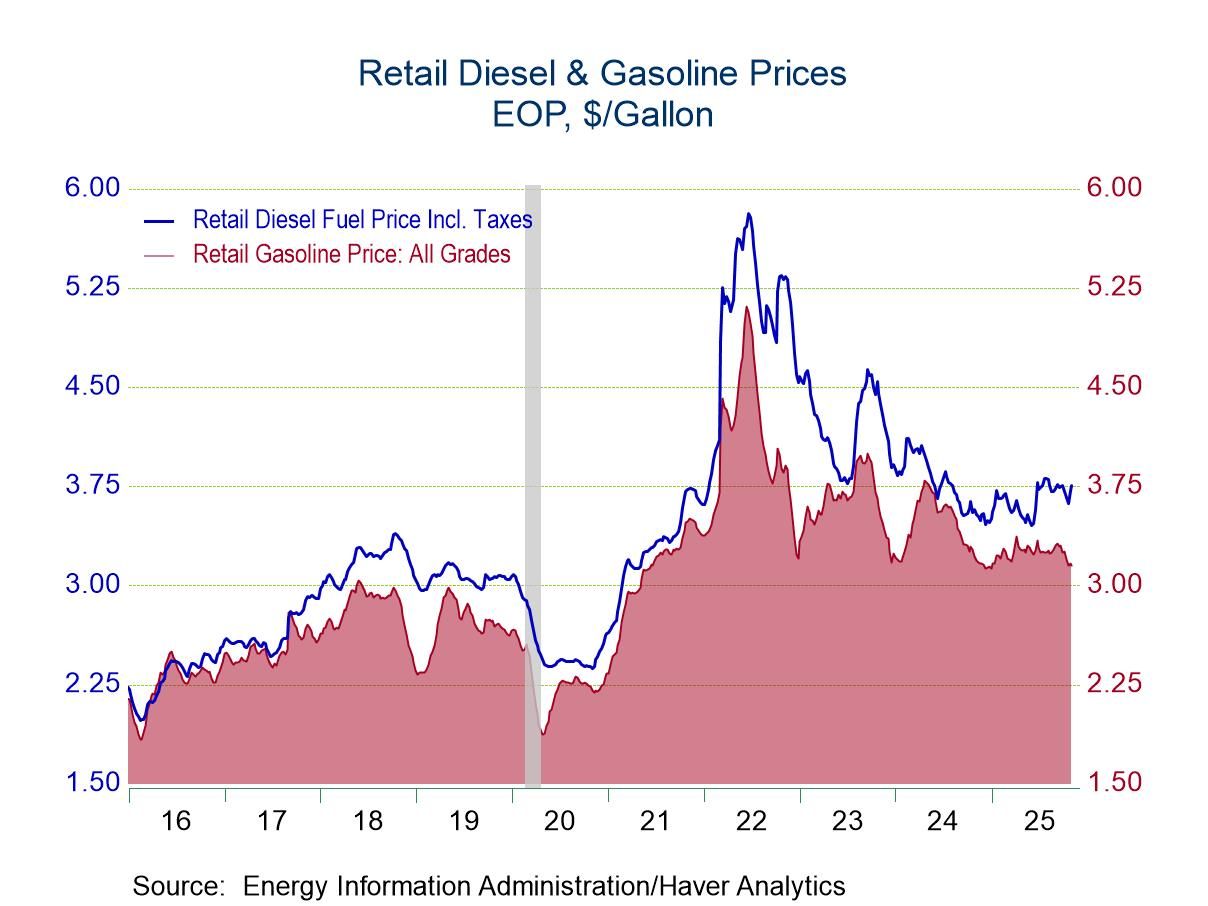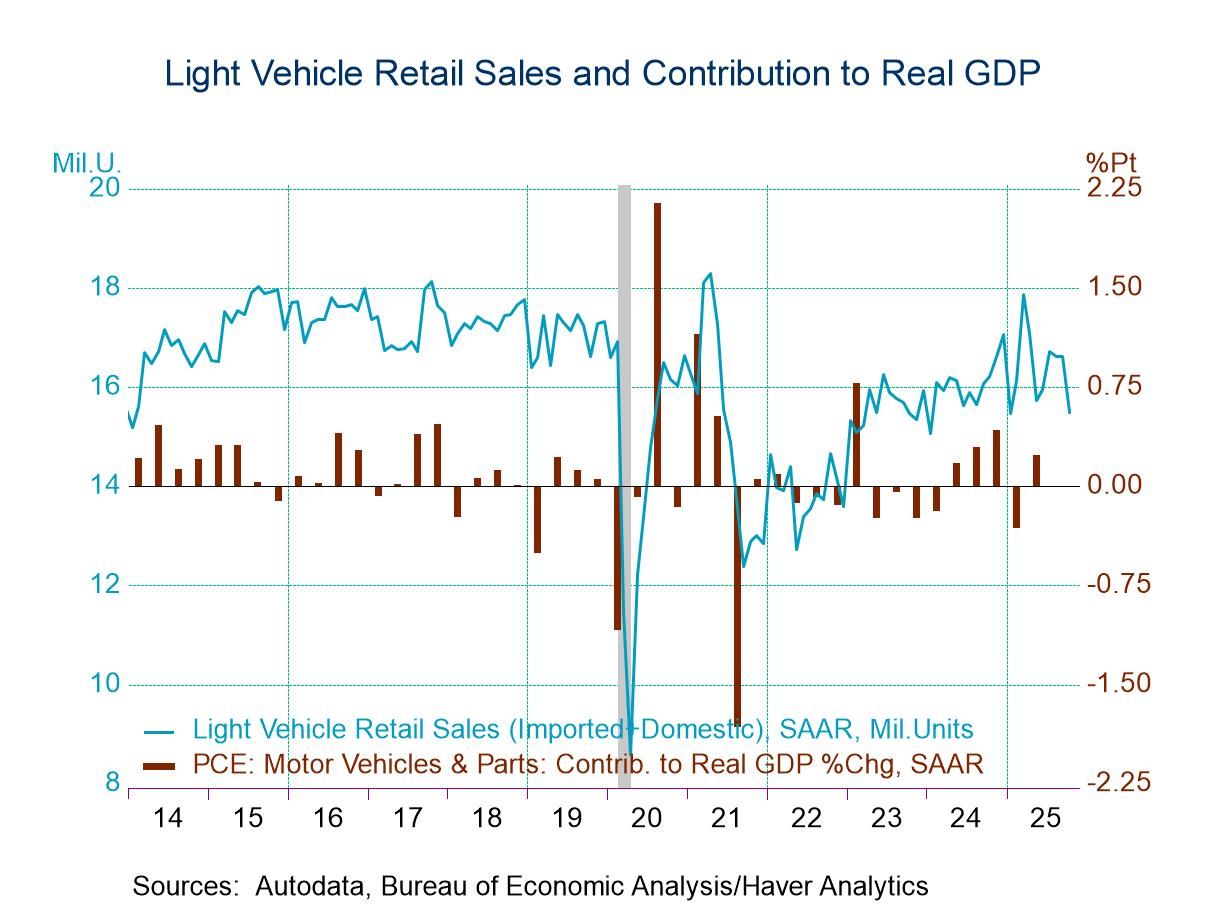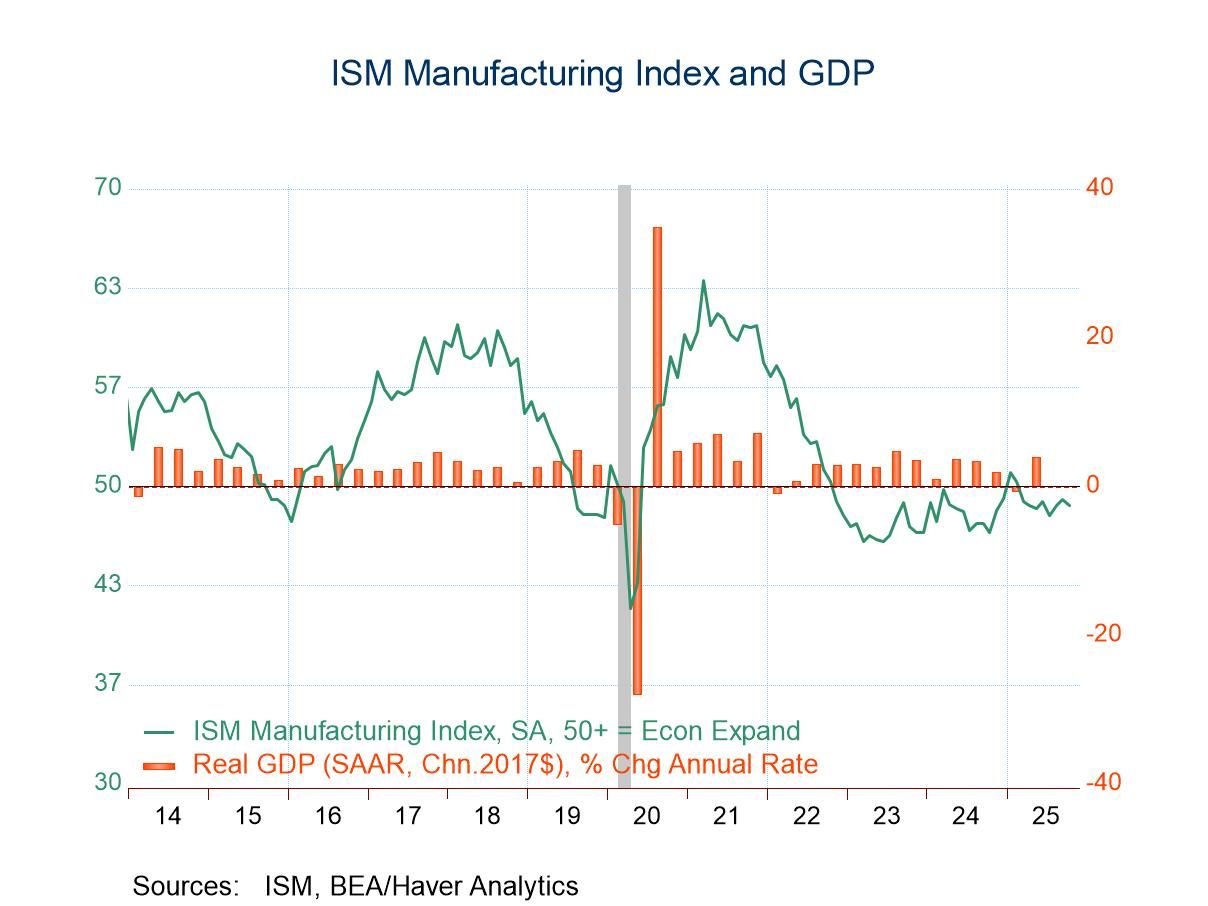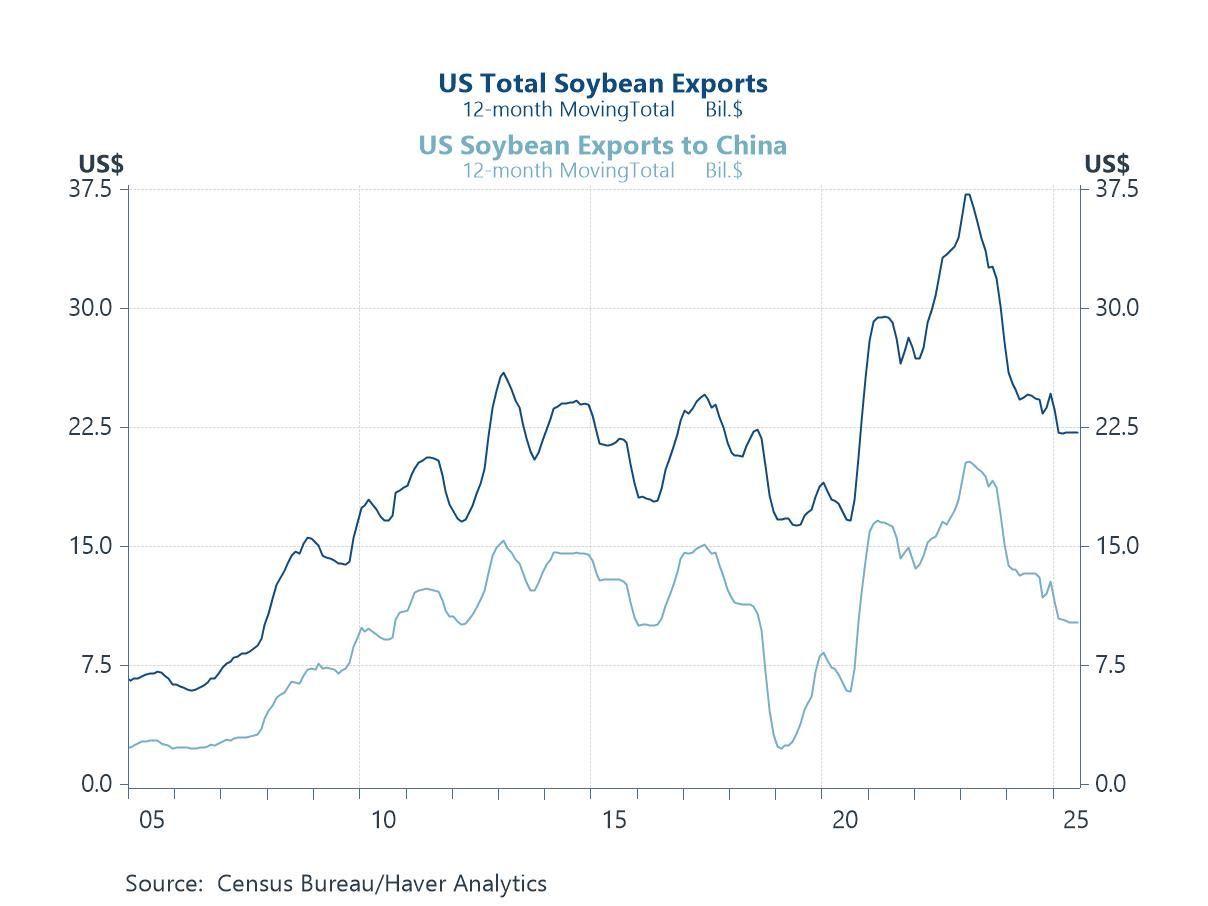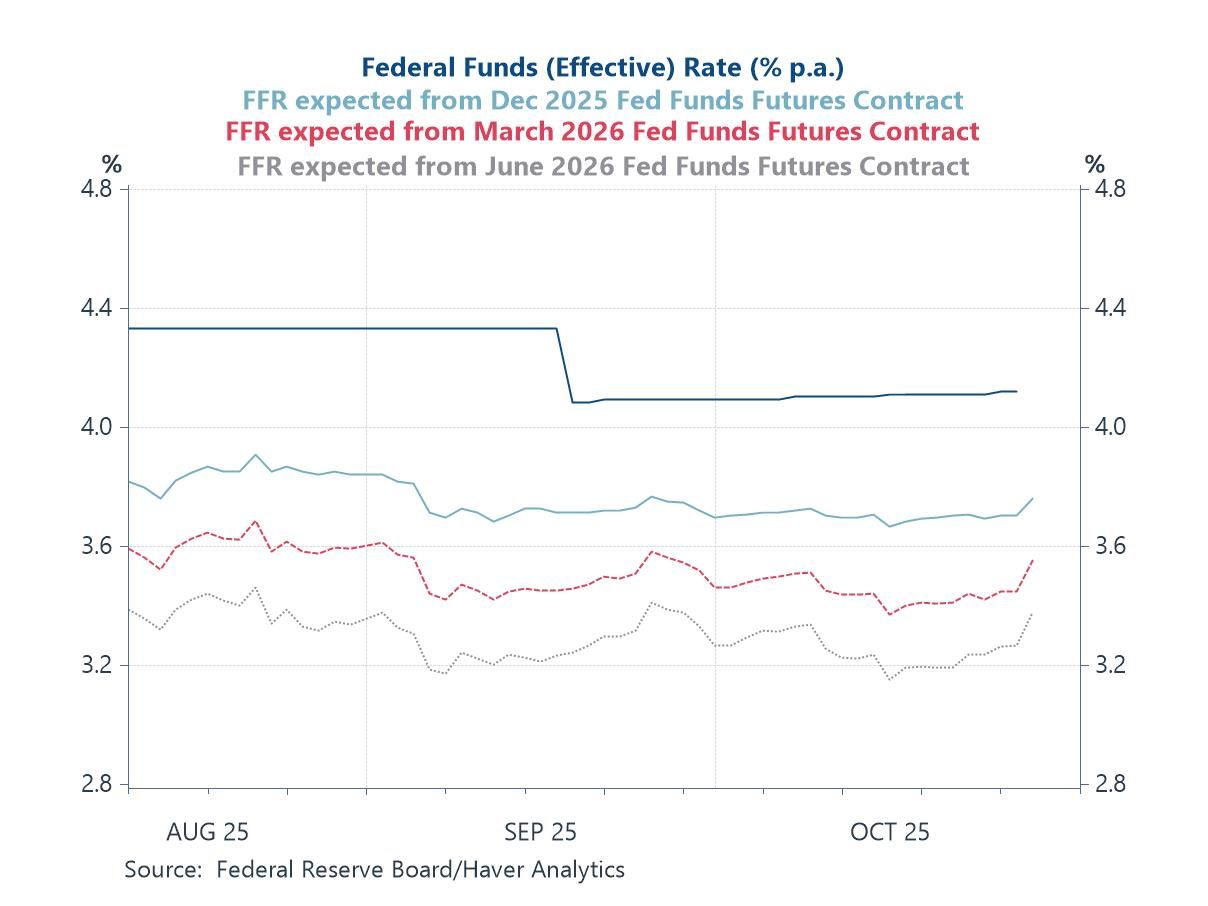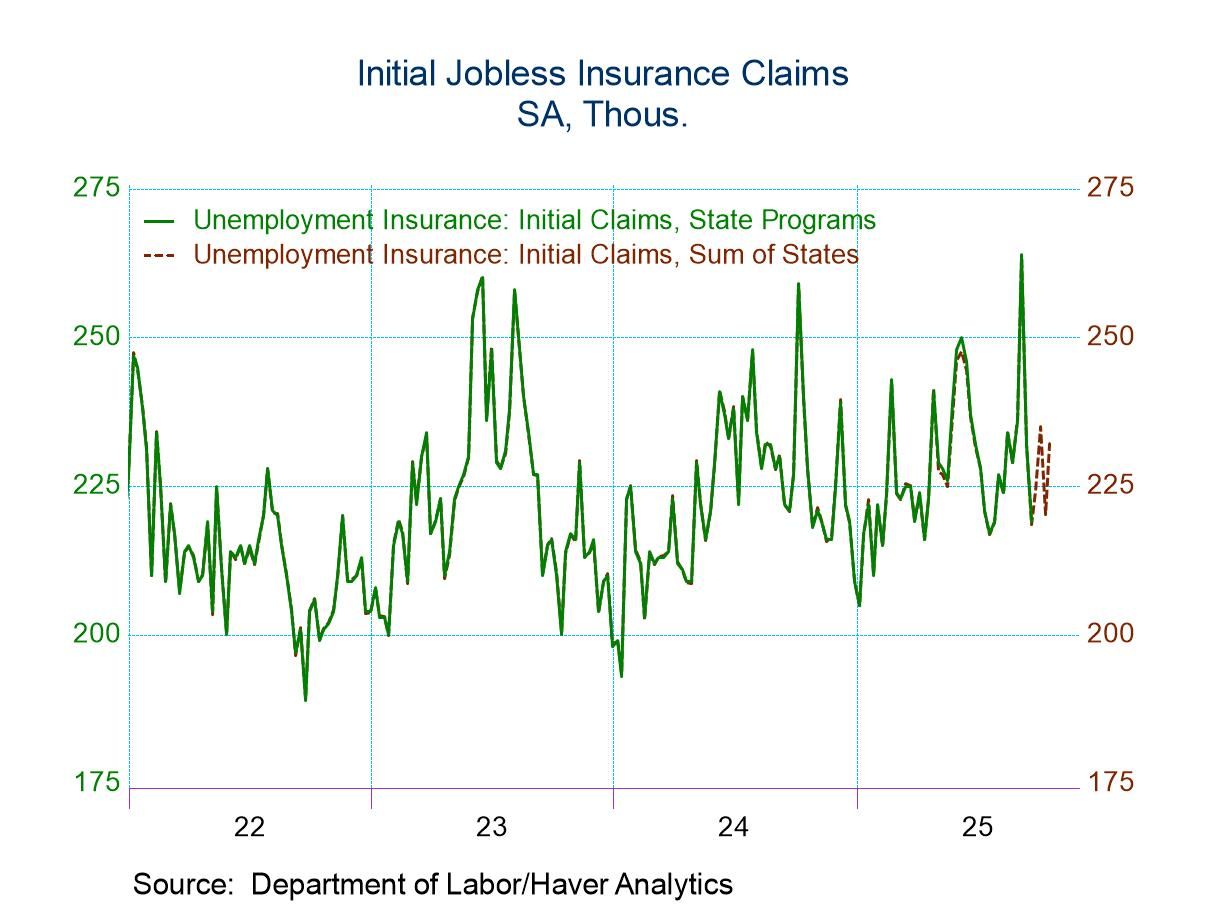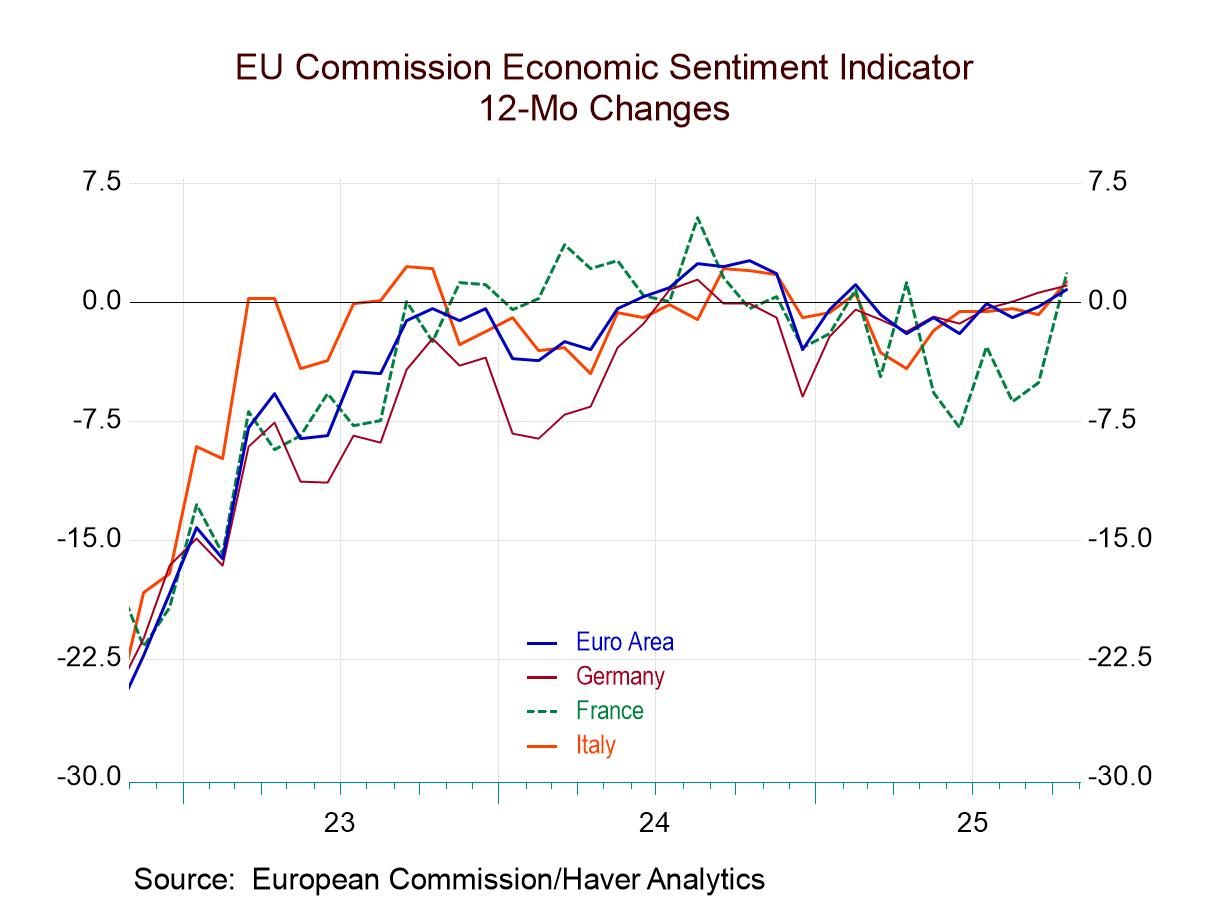- Gasoline prices are minimally changed.
- Crude oil costs rise further.
- Natural gas prices strengthen.
- USA| Nov 04 2025
U.S. Energy Prices Are Mixed in Latest Week
by:Tom Moeller
|in:Economy in Brief
- USA| Nov 03 2025
U.S. Light Vehicle Sales Fall Sharply in October
- Light truck sales and auto purchases decline m/m.
- Total sales decline sharply y/y.
- Imports' market share declines.
by:Tom Moeller
|in:Economy in Brief
- Decline reverses all of September increase.
- Lower production offsets new orders rise.
- Price index falls to nine-month low.
by:Tom Moeller
|in:Economy in Brief
 Asia| Nov 03 2025
Asia| Nov 03 2025Economic Letter from Asia: Come Together
This week, we review a wave of key developments across Asia following US President Trump’s tour of the region last week. A central theme concerned countries courting closer ties with the US to avoid harsher actions, while also boosting regional cooperation amid trade barriers and scrutiny of China. This push for closer ties has manifested through new and updated trade agreements—ironically driven by ongoing uncertainty in global trade and supply chains, with US–China relations at the core. A major outcome of Trump’s trip was the new US–China trade agreement, which included the US halving tariffs on Chinese fentanyl-related products to 10%, while China suspended rare earth export controls and resumed soybean purchases vital to the US (chart 1). Perhaps more importantly, the deal signalled a small conciliatory shift and avoided a potentially worse outcome. Beyond the US–China agreement at the APEC Summit in South Korea, the US–South Korea trade deal also gained more clarity. Under the deal, US auto tariffs on South Korea has fallen to 15%, matching the rate applied to Japan and likely providing relief for South Korean automakers (chart 2).
Trump’s visit to Japan was another highlight. Relations with new Prime Minister Takaichi got off to a strong start, and further details emerged on Japan’s previously cited $550 billion investment commitment in the US—substantial even relative to Japan’s existing direct investment there (chart 3). However, specifics on the timing and implementation of the investment remain limited. Meanwhile, at the ASEAN Summit earlier in the week, aside from Trump’s engagements, the bloc officially welcomed its 11th member—Timor-Leste—the first new member in decades—granting it access to the bloc’s mechanisms and potentially supporting a catch-up in economic development (chart 5). Looking ahead, the focus on China and Japan is likely to continue, with China set to release its October trade (chart 6) and CPI data, and Japan scheduled to report employee wages and household spending.
The APEC summit The US and China made a modest but meaningful step forward on trade following the Trump–Xi meeting at the APEC Summit in South Korea. The US lowered tariffs on Chinese fentanyl-related products to 10% from 20% and suspended enforcement of rules targeting subsidiaries of blacklisted firms—previous points of contention for Beijing. In return, China pledged stronger efforts to curb fentanyl flows, paused rare earth export controls for a year, and resumed purchases of US soybeans—significant given its historically large share of US export demand (chart 1). While not a comprehensive reset, these moves eased immediate tensions and helped avert more severe outcomes, including Trump’s previously threatened 100% tariff hike. The tone of the meeting also suggests a more conciliatory shift, though relations remain fragile and the risk of renewed escalation is still material.
- Metals and textile prices strengthen.
- Framing lumber costs backpedal.
- Crude oil prices weaken.
by:Tom Moeller
|in:Economy in Brief
 Global| Oct 30 2025
Global| Oct 30 2025Charts of the Week: Optimism with Caveats
Global equity markets are once again flirting with record highs, buoyed by renewed optimism that the global economy can achieve a soft landing—and by persistent enthusiasm over the potential productivity gains from AI-related investment. The Federal Reserve’s decision to cut rates by 25bps this week—its second this autumn—initially reinforced expectations that global monetary policy is shifting toward a more accommodative stance. However, Chair Powell’s reminder that a further cut in December was “not inevitable” tempered that optimism and was met with some disappointment in financial markets (chart 1). Even so, the broader tone remains constructive, though it contrasts with a still-fragile macro environment. Renewed conflict in Gaza, the ongoing US government shutdown, and intensifying trade tensions have kept risk sentiment uneven and underscored the fragility of the recovery. The latest flash PMIs (chart 2) show modest global expansion led by services, while manufacturing continues to struggle. Consumer confidence (chart 3) tells a similar story: sentiment has weakened in the US as the labour market softens, stabilised in the euro area, and improved slightly in the UK. In the euro area, sluggish money and credit growth (chart 4) and the ECB’s latest bank-lending survey confirm that financial conditions remain mildly restrictive despite recent rate cuts. The UK CBI Industrial Trends Survey (chart 5) points to manufacturers reducing inventories and deferring investment plans amid demand uncertainty. Externally, the Drewry Container Index (chart 6) has fallen back from 2024’s elevated levels, signalling easing supply-chain pressures and subdued traded-goods inflation—though tariff realignments remain a potential source of friction.
by:Andrew Cates
|in:Economy in Brief
- USA| Oct 30 2025
U.S. Unemployment Insurance Claims Increase in Latest Week
- Rise in initial claims reverses earlier decline.
- Continuing claims jump.
- State unemployment rates vary.
by:Tom Moeller
|in:Economy in Brief
The European monetary union’s index of sentiment created by the European Commission rose sharply in October to its highest level since April 2023. There were improvements in the three of the five sector indexes reported with only construction and services unchanged in October relative to their September values.
Despite the nice step-up in the indexes in October, they are still at relatively low values. Only two sectors, construction and retailing, have readings above their 50th percentiles with construction at a 77.5 percentile standing and retailing at a 51.5 percentile standing. The service sector has a low 27.5 percentile standing, consumer confidence is at a 24.3 percentile standing, and the industrial sector is at a 35.9 percentile. Data are ranked over observations back to 1990, where feasible.
‘Better’ is not always ‘good’ Clearly the euro area is not performing particularly well at this time. The rankings data make that especially clear. The service sector and the industrial sector are substantially below their historic medians. The median occurs at a queue (or rank) standing at the 50-percentile mark. Consumer confidence is in the lower 25-percentile of its range for this period; services are in their 27th percentile – a low ranking for such an important job creating sector.
The largest have the best October showing The four largest economies in the euro area lead the way in the month and on the broader trip to mediocrity. Germany, France, and Italy each rise by one percentage point or more in October. More broadly, Italy and Spain are the only two ‘large economies’ with percentile standings above their respective 50th percentiles: Spain is at a 55.3 percentile standing, Italy at a 50.9 percentile standing. The largest two economies in the monetary union, Germany and France, respectively, have standings at the 19th percentile for Germany in the 33rd percentile for France.
Granular performance of the Euro Area In October only one large economy backtracked compared to September and that's Spain; its hard decline of 0.9% came after its index rose by 2.9% in September. Among the remaining 14 economies, seven of them showed declines in October and seven of them showed increases. The pickup and performance for the monetary union in October is substantially on the back of the larger economies that are doing better while these smaller monetary union members are clearly mixed.
Standings In terms of standings, the smaller monetary union economies show 5 of 14 with standings above their 50th percentile. These are Portugal at 51.5%, Cyprus at 56.2%, Lithuania at 64.4%, Greece at 71.1%, and Malta at a strong 89.1%.
Summing up It is a good month statistically for the euro area. However, the gains are not widespread, and the sector performance is still mixed. But this is the strongest level for the EU sentiment index since April 2023, and that is something.
- of2681Go to 10 page


